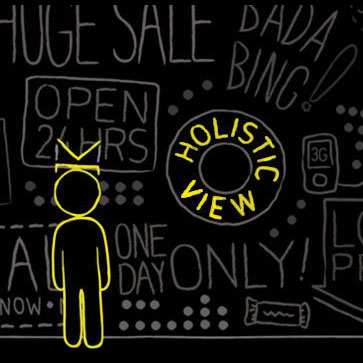Developing the Right PPC Bidding Strategy

Pay-per-click (PPC) advertising campaigns and bidding strategies are like any other business decision, you need to start with the result in mind. Clearly define the business objective before setting your first bid.
For example, one campaign might focus on promoting your brand, while another is purely sales driven. You also need to know the value of this targeted business objective. Which strategy is going to yield the best return on your marketing dollars and when?
There are two very important questions to ask before setting any bids.
- What are the budget restrictions and requirements for your campaign?
- What is the timeframe needed to effectively determine the success of your campaign?
These questions will ultimately influence your PPC bidding strategy.
Once these questions have been answered, you need to determine the most effective way to generate the traffic needed to meet your goals. What follows are three PPC bidding strategies that you may utilize, depending on your desired results, broken down by keyword selection, bidding strategy and business objective(s).
Hopefully this provides a good framework to help you decide your PPC objectives and how to accomplish them. But regardless of the bidding strategy you employ, the universal truth for each approach is that you need to apply a continuous effort to enhance and optimize your campaign.
This means always keeping your business objective in mind, and constantly refining your keyword list and tweaking your bids in order to hit your target. While PPC marketing can be highly effective, it can also be expensive and wasteful if you are not paying attention and following your business plans. As the holiday shopping season heats up, now is a great time to optimize your campaigns and reap the rewards.
Looking for assistance with your PPC advertising campaign? Visit Website Magazine'sWho's Who Directory today and find qualified agencies and individuals to help you on your way to Web success!
Branding/Market Exposure:
The goal of this strategy is to gain as much market exposure as possible. Here you are targeting users who may not be aware of your product or services, but once you get their attention, they will be interested in your offerings. With this strategy, you are targeting users in the research phase of the buying cycle, gathering information on their chosen topic.
Keyword selection
Target a broad, extensive keyword list. You want the most exposure possible, so your keywords should be wide reaching. Here you want to focus on the "head" of your keyword list, those keywords that receive the most traffic.
Bidding strategy
When creating brand awareness and/or introducing users to your company, your bids need to be set high enough so that your ads are displayed on the first page of search engine results. This way, when a user searches on any term related to your product or service, they will see your ad, and your company name, immediately.
Business objective
Focus on getting visitors to your site. With this strategy, you are counting on a long-term return of brand awareness, not an immediate ROI measurement. Keep mind that this strategy should only be short term and needs to evolve into a more sustainable, targeted campaign in the future. A broad campaign is great for making an initial splash in the search engine results pages (SERPs), but eventually needs to shift towards more finite terms, measurable results and optimized bidding for the best use of your PPC budget.
Conversion/ROI Strategy:
The goal of this strategy is to generate a high number of conversions and an effective ROI for each keyword. Careful attention is required to accomplish this. You need to constantly refine and optimize your campaign in order to generate as many conversions as possible, while focusing on keywords that generate leads that yield a high ROI.
Keyword selection
Your keyword list is highly targeted,P focused solely on the terms that generate conversions or sales. You want to focus on the "long tail" terms that will qualify your visitors before they even get to your site.
Bidding strategy
The bids on your keywords should fluctuate according to their ROI. This strategy requires constant analysis as you determine which keywords convert and in which position each keyword generates the most conversions.
Business objective
Generate as many conversions as possible by increasing bids on keywords that generate the best ROI, while lowering bids on underperforming keywords.
Sales Cycle Strategy:
This is a mixture of the first two strategies. Bids are determined by where keywords appear and are used in the buying cycle according to your target audience. Here you should focus on the general keywords that drive heavy traffic (the "head" of your keyword list) as well as those terms that are highly targeted to users who know what they want and are ready to make a buying decision (the "long tail" terms on your list).
Keyword selection
Your keyword list is broad so that you are targeting users in each stage of the buying cycle.
Bidding strategy
Bid lower on your more general, broader terms. These terms will make sure that your business is at least visible when a user is conducting research. Bid higher on terms which generate a positive ROI. Users are searching these keywords when they are ready to buy.
Business objective
You want to be present for each stage of the buying process, but your end goal is to generate conversions that are cost effective.
For example, if you sell computer keyboards, this three-tiered bidding strategy breaks down like this:
- Tier one, "research" keywords: Your bid on "keyboard" should be low but you want your company to be visible as a user begins their research.
- Tier two, "shopping" keywords: Your bid on "cordless keyboards" should be slightly higher as this user is starting to narrow their search.
- Tier three, "purchasing" keywords: Your bid should be highest on "Logitech cordless keyboards" because this user knows what he or she wants and is ready to make a purchase.






